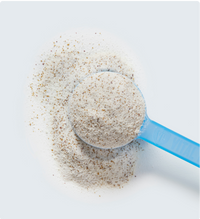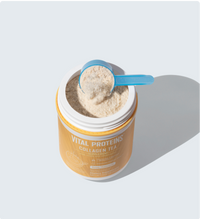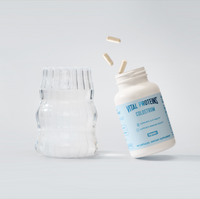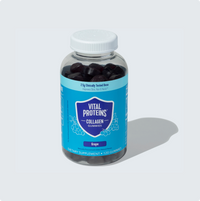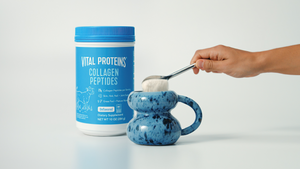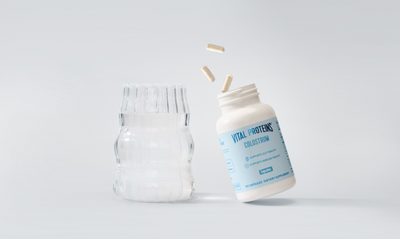Shaving has become a double-edged sword. On the one hand, smooth skin makes us feel more confident. But on the other hand, it's become the bane of our existence for years (maybe even decades!). This comes from one too many nicks, razor bumps and ingrown hairs over the years. So, what’s a girl (or guy) to do?
Follow these dermatologist-approved tips. Each nugget of wisdom will help you step up your shaving game for a smooth, long-lasting shave.

Shave with the grain
While you could rebel and go against the grain, this will likely result in several skin issues, says Anna Chacon, M.D., board certified dermatologist. "Shave in the direction of hair growth to avoid razor burns and irritation, which can lead to ingrown hairs or a contact dermatitis reaction in the skin."
This will also prevent those annoying razor bumps, adds Jill Canes, NP and Founder of Face Forward Medical Aesthetics. "Razor bumps happen because hair gets stuck in the hair follicles and curl back in," she explains. "The razor blade tugs on the hair before it cuts it when you shave against the direction of the hair."
If you're not sure whether you're shaving the right way, think of it like this: "Hair should feel smooth and soft if you're going with the grain," Canes tells Lively. "Conversely, the hair will feel rough and prickly if you're going against the grain."
Always shave on damp or wet skin
No matter how busy you are, never skip this important step. "Dry shaving can increase the friction of the razor on the skin leading to skin damage and trauma," says Purvisha Patel M.D., Founder of Visha Skincare.
N.Y.C.-based dermatologist, Hadley King, M.D., agrees, adding that you should spend about 10 minutes in warm water to help soften the outer layer of skin (this is the perfect amount of time to apply a hair mask or belt out a few jams). Letting the skin soften will make it easier to remove hair while also decreasing the risk of razor burn, says King.

Use a new, sharp razor
A sharp blade will leave your skin looking extra sharp. Consequently, a dull blade will only add time and irritation to your routine. "A dull blade will feel like the hair is being pulled from the skin as opposed to providing a smooth shave experience," says consultant dermatologist, Dr. Rachael Burns.
According to Chacon, these are your options for prevention: Rinse your razor out on a frequent basis to remove hairs that may have gotten stuck, as well as residual shaving cream. Whenever necessary, change out the blade entirely.
Lily Talakoub, M.D., board-certified dermatologist and Founder of Derm to Door, recommends using a one-or-two blade razor not a four or five-blade razor: "The more blades the higher the hair lifts off the skin and then drops under the top layer of skin causing ingrown hairs with regrow."
Use a shaving cream
It's the OG for a reason. Things like shower gel or body wash will likely clog your razor. Plus, Chacon says you can buy shaving creams made specifically for different skin types, such as sensitive skin. "Apply a shave gel to the area to soften and hydrate the skin and the hair," explains N.Y.C.-based dermatologist, Joshua Zeichner, M.D. "The gel also allows the razor to glide easily against the skin."
After you apply it, Chacon recommends allowing it to sit on the skin for a couple of minutes to help soften the hair to ease shaving to single strokes. "Even using a brush can help coat the hairs and lift them to facilitate shaving."
Exfoliate first
This is key to prepping your skin like a pro. "Exfoliation can allow your hair to break through the surface of the skin more easily, reducing the growth of ingrown hairs," says Canes. When choosing an exfoliator, King says that you have a choice between either physical exfoliation with a gentle scrub or chemical exfoliation with a toner or cleanser. The latter should contain glycolic or alpha hydroxy acid "because this decreases the risk that skin will be covering where the hair is growing."
Related Articles
Consider using an electric razor
As much as you love a close shave, it increases the risk of ingrown hairs. This is where an electric razor comes in. "Use an electric razor rather than a blade so that the hair, even at its shortest, is above the skin surface," says King. If you only have a regular razor, avoid going over the same area more than once to prevent ingrowns.
Focus on aftercare
First, Chacon says to rinse the shaved area with cold water to reduce inflammation. Then, after you've towel-dried off, focus on moisturizing. "Make sure to apply an after-shave moisturizer to repair the skin barrier from any microscopic nicks or cuts and maintain hydration," explains Zeichner.
Take care of your skin in other ways by adding Vital Proteins® collagen products to your daily routine. A daily dose of ingestible collagen — like Vital Proteins Beauty Collagen®— helps to support healthy hair, skin, nails and joints.**
Store your razor blades in a dry place
You might be like most people who store their razors in the shower or bathroom. Unfortunately, this doesn't allow your razors to dry properly, which could result in some scary health situations. "Perpetually damp razors can easily lead to the growth of bacteria that can cause infections," explains Canes. "If you accidentally nick yourself with the blade, then bacteria can get into your skin." Ouch.
Her recommendation is wiping your razor dry after using it and covering it with something protective. You should then store it in a dry area, such as a cupboard.

